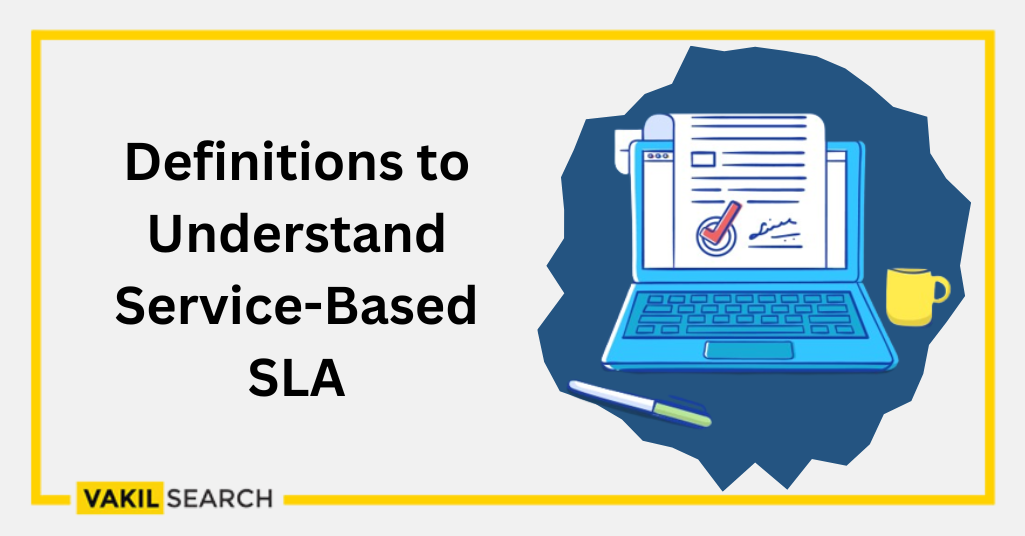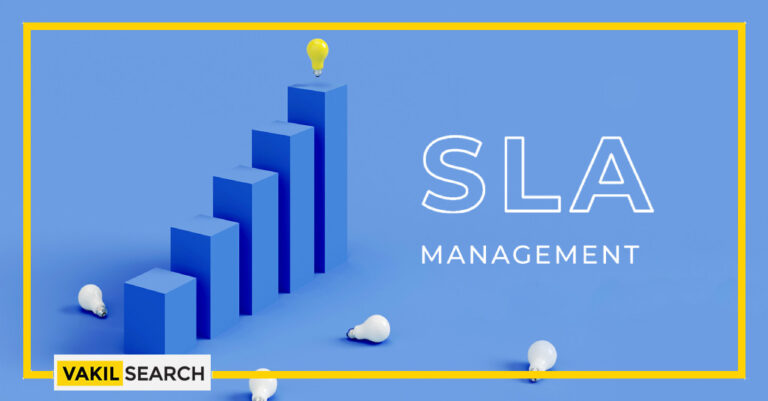SLA is the abbreviation of Service Level Agreement that is documented between a customer and a service provider involving the particular and quantitative features of service offerings. SLA also specifies the expectations regarding service quality, availability and corresponding responsibilities
SLAs are documented to ensure service executives receive clarity regarding what the customers expect from them, what they have to do to meet the client’s necessities and the ultimate result. Approved managerial instruments govern the monitoring of SLA. Without incorporating them, you cannot ensure effective management. In this blog let us know about the definitions to understand Service-Based SLA.
What is an SLA?
A service-level agreement (SLA) is a contract that outlines the services a provider will offer and the standards they will meet. It serves as a commitment between a service provider and their customers, ensuring clarity on service expectations.
Why are SLAs Important?
SLAs are essential for managing customer expectations and defining the scope of service quality. Service providers benefit by outlining their responsibilities and limits, while customers gain insights into what they can expect. It’s one of the foundational agreements that guide service interactions.
Who Needs a Service-Level Agreement?
SLAs extend beyond network services, finding application in various industries, including IT, cloud computing, and more. Corporate IT departments use SLAs to establish service standards with in-house customers, ensuring transparency and alignment.
Key Components of an SLA
An SLA comprises:
Agreement overview: Introducing involved parties, start date, and service description.
Description of services: Detailed service definitions, turnaround times, processes, dependencies, and technologies used.
Exclusions: Clearly defining services not offered.
Service performance: Metrics and levels defining service quality.
Redressing: Compensation terms for unfulfilled SLA obligations.
Stakeholders: Defining parties and responsibilities.
Security: Outlining security measures taken by the provider.
Risk management and disaster recovery: Communicating risk management and recovery plans.
Service tracking and reporting: Describing reporting structure and intervals.
Periodic review and change processes: Regular review and adjustment of SLA and KPIs.
Termination process: Conditions for agreement termination.
Signatures: Approval by stakeholders.
How Can I Verify Service Levels?
Ensuring service delivery aligns with the SLA is crucial. Providers often share statistics through online portals, allowing customers to track service levels and claim compensation for breaches.
What are the Three Types of SLA?
- Service-based SLA: This type of SLA defines the level of service that will be provided for a specific service, such as network uptime or application availability.
- Customer-based SLA: This type of SLA defines the level of service that will be provided to a specific customer, based on their unique needs and requirements.
- Multi-level SLA: This type of SLA defines different levels of service for different customers or services, based on their importance or criticality.
How to Write a Service Level Agreement in 5 Steps?
- Define the service: The first step in writing an SLA is to clearly define the service that will be provided. This includes identifying the scope of the service, the expected outcomes, and any limitations or exclusions.
- Verify service levels: The next step is to verify the service levels that will be provided. This includes identifying the availability, performance, and response time requirements, as well as any penalties for non-compliance.
- Determine performance metrics: The third step is to determine the performance metrics that will be used to measure the service levels. This includes identifying the tools and methods that will be used to monitor and report on performance.
- Prepare the service level agreement document: The fourth step is to prepare the SLA document, which should include all of the information gathered in the previous steps. The document should be clear, concise, and easy to understand.
- Review the SLA with all stakeholders: The final step is to review the SLA with all stakeholders, including the service provider, the customer, and any other relevant parties. This ensures that everyone is on the same page and understands their roles and responsibilities.
SLA Best Practices
- Clearly define the scope of the service and the expected outcomes.
- Identify the service levels and performance metrics that will be used to measure performance.
- Include penalties for non-compliance to ensure accountability.
- Review and update the SLA regularly to ensure it remains relevant and effective.
- Involve all stakeholders in the SLA process to ensure buy-in and ownership.
- Use clear and concise language to ensure the SLA is easy to understand.
- Ensure that the SLA is aligned with the overall business goals and objectives.
What Should I Consider When Selecting Metrics for My SLA?
Metrics should be fair and controllable by the service provider. Collecting data automatically is ideal. SLAs may specify metrics like availability, performance benchmarks, response time, resolution time, and more.
Remember, SLAs shape customer expectations and provider performance, benefiting both parties.
How to Track SLAs?
Over time, statistics along with KPIs or key performance indicators serve as the fundamental elements empowering the SLAs. You need to learn about the features of ideal SLA management tools to keep an eye on these metrics.
Service metrics can be monitored over a fixed period through SLA management tools. This step is often ignored, later on, giving rise to poor service reviews by various clients. Thus considering them will ensure optimum user experience. Besides this, end-to-end service quality will become transparent. These instruments are programmed to process metrics to produce reports indicating the efficiency and productivity of vital activities. It contributes to the entire service delivery. The SLA management tools even provide technical support to guide service vendors in resolving new or complicated problems; this creates a scope for service improvement.
SLA management demands the governance of particular key performance indicators. These include:
- Feedback on service performance
- Defect percentage or defect rate
- Average frequency to answer
- Availability of services
- Service uptime
- Security provided to the clients’ databases
- MTTR or mean time to restore
- TAT or turnaround time
MTTR defines the average duration consumed to recover a failed service by revitalising the whole system to its operational condition. It is time for a service provider requires to complete the repair activities.
Turnaround time is the number of hours or duration required by a vendor to complete assigned work. This metric indicates how efficient your chosen agency is, as the sooner they can finish one task, the quicker you can hand over the next pressing problem to them.
Besides the benefits described above, an service-based SLA management tool gives you insights into service standards at both broader and grassroots levels. Clubbing service-based SLAs with auxiliary management practices like an ITSM hub in a centralised platform allows us to monitor all the tickets in a single window. This is helpful to attain a quick perception of factors affecting overall service quality.
In a nutshell, an Service-Based SLA management tool facilitates:
- Pointing out service delivery breaches
- Reviews performance over a time
- Set up auto alerts to retrieve quick responses
Responding to user feedback now and then helps you develop service dispensing strategies and enhance overall service quality.
Conclusion
SLAs act as primary legal bonds crucial to building trustable relationships. SLAs are helpful for you and your service vendor. These tools ensure client needs are met and provide insight to the IT team. This gives the companies ample room to resolve issues and reply to customer complaints without delay.
Service Level Agreements are nothing but service-oriented legal terms and conditions. It helps to standardise the dispense of timely services, thus contributing to enhanced trust among the three entities concerned. Also, the SLA gets rid of uncertainty of services.
SLAs formalise tech communications; thus, customers can seamlessly lodge their complaints without facing any difficulty that used to arrive in the past resulting from complicated IT terms. SLAs encourage an open-ended conversation where customers and service providers can make a service-related decision per the agreed-upon conditions.
SLAs guarantee efficiency by establishing standard resolution periods for each task for the IT teams. This generates true customer satisfaction and refines the IT team’s skill set. Timely services reach the patrons without fail.
Hope this blog regarding the definitions to understand Service-Based SLA was helpful!
FAQs
1. What factors should be considered when drafting a service-based SLA?
When drafting a service-based SLA, several factors should be considered, such as the scope of the service, the expected outcomes, availability, performance requirements and the penalties for non-compliance. It's also important to consider the customer's needs and expectations, as well as any industry-specific regulations or standards.
2. How do SLAs impact customer satisfaction and loyalty?
SLAs can have a significant impact on customer satisfaction and loyalty. When customers have clear expectations of the service they will receive and those expectations are met or exceeded, they are more likely to be satisfied with the service and remain loyal to the provider. On the other hand, if the service falls short of the SLA, customers may become dissatisfied and seek out other providers.
3. How do service-based SLAs differ across industries?
Service-based SLAs can differ across industries. For example, in the healthcare industry, SLAs may focus on patient care and safety, while in the IT industry, SLAs may focus on network uptime and application availability.
Also, Read:










